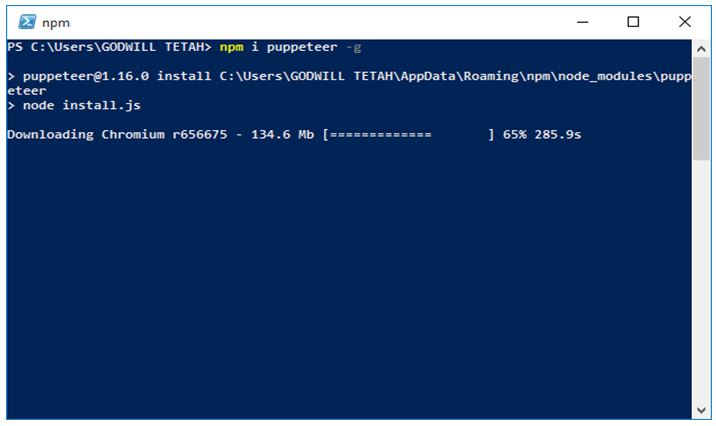

Puppeteer uses several defaults that can be customized through configurationįor example, to change the default cache directory Puppeteer uses to installīrowsers, you can add a. Include $HOME/.cache into the project's deployment.įor a version of Puppeteer without the browser installation, see Step 1: Install the package Install the package in your node project mkdir -p download-csv-puppeteer & npm init -y npm install puppeteer touch index. So you can pretty much do anything that you can do in the browser via code. Your project folder (see an example below) because not all hosting providers Puppeteer provides the way to control and interact with your chrome/chromium browser via Node.js. Heroku, you might need to reconfigure the location of the cache to be within

If you deploy a project using Puppeteer to a hosting provider, such as Render or At any rate, I hope someone has made a third-party extension in that case.

that is surprising to me, as I can't think of a good reason why they wouldn't implement that. The browser is downloaded to the $HOME/.cache/puppeteer folderīy default (starting with Puppeteer v19.0.0). Puppeteer won't implement this /GoogleChrome/puppeteer/issues/2433 hardkoded at 19:38 Well. Most of the things that were done in the browser manually can be done by using puppeteer. It allows developers to write and maintain simple and automated tests. Puppeteer creates its own browser user profile which it cleans up on every run.When you install Puppeteer, it automatically downloads a recent version ofĬhrome for Testing (~170MB macOS, ~282MB Linux, ~280MB Windows) that is guaranteed to Puppeteer is an open-source library for Node.js that helps in automating and simplifying development by providing control over the Developers tools. This article describes some differences for Linux users.

See this article for a description of the differences between Chromium and Chrome. See Puppeteer.launch() for more information. You can also use Puppeteer with Firefox Nightly (experimental support). const puppeteer = require ( 'puppeteer' ) Ĭonst browser = await puppeteer. You create an instance of Browser, open pages, and then manipulate them with Puppeteer's API.Įxample: navigating to and saving a screenshot as example.png: Puppeteer will be familiar to people using other browser testing frameworks. All examples below use async/await which is only supported in Node v7.6.0 or greater. Starting from v3.0.0 Puppeteer starts to rely on Node 10.18.1+. Prior to v1.18.1, Puppeteer required at least Node v6.4.0.


 0 kommentar(er)
0 kommentar(er)
